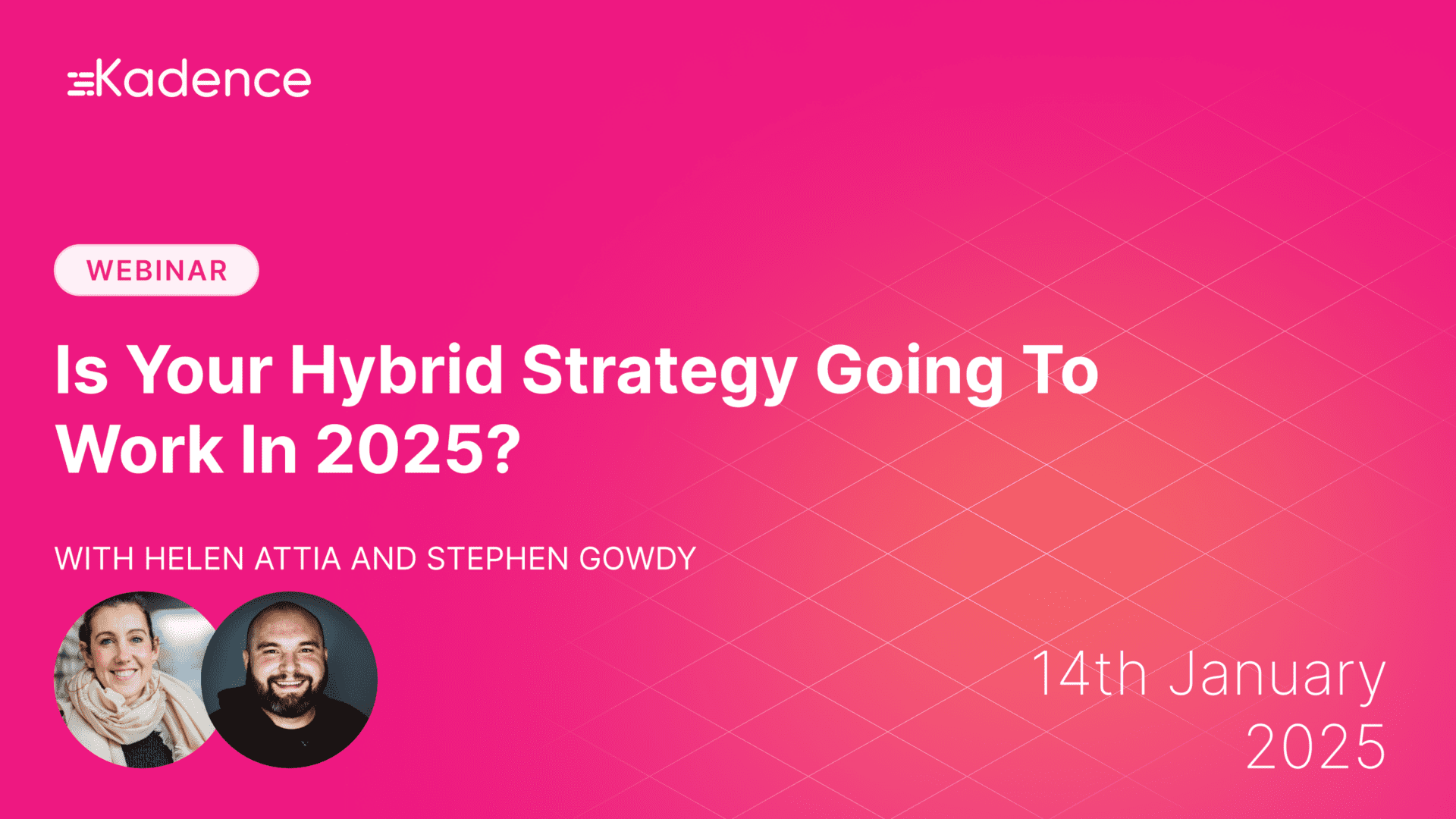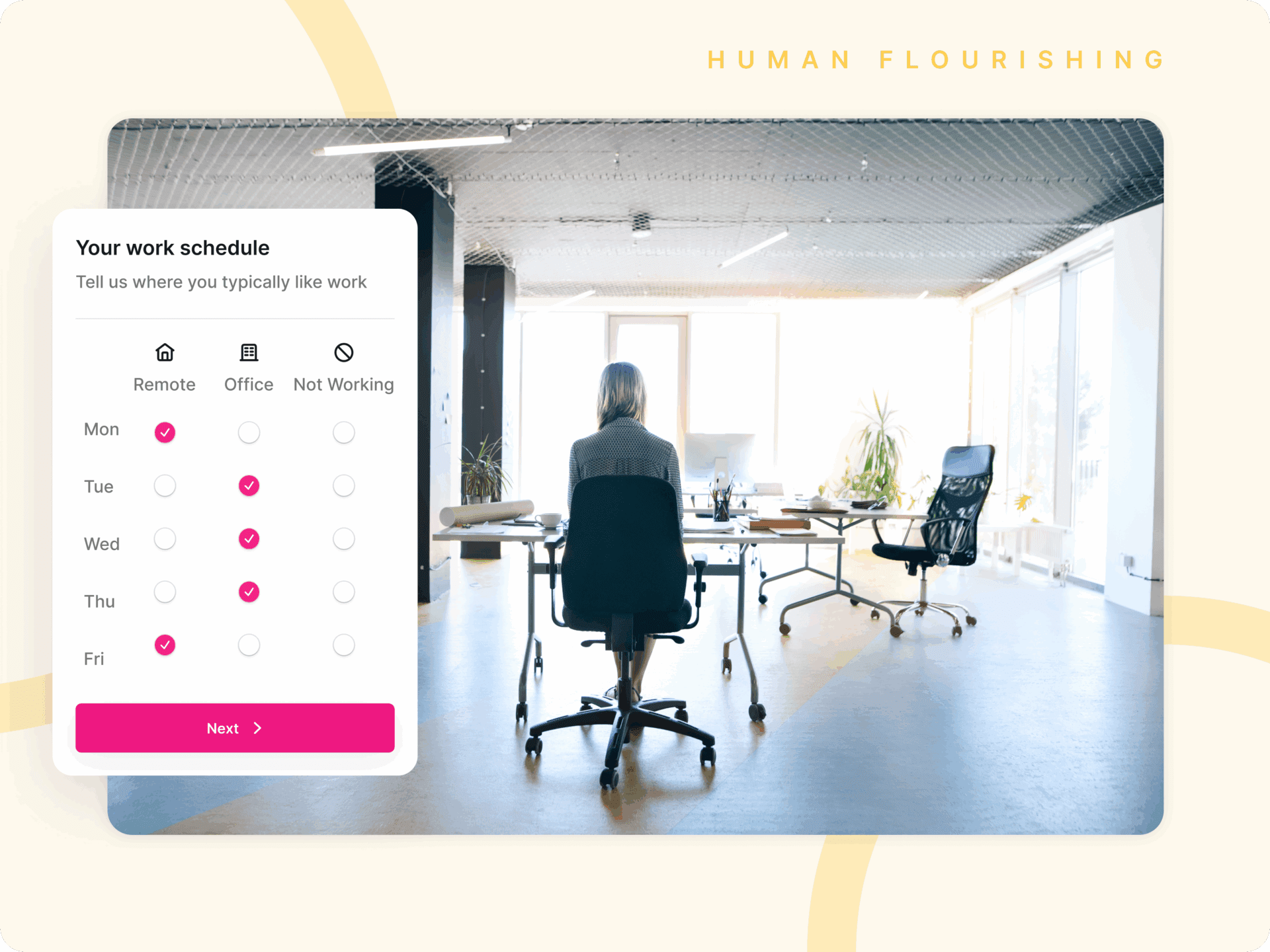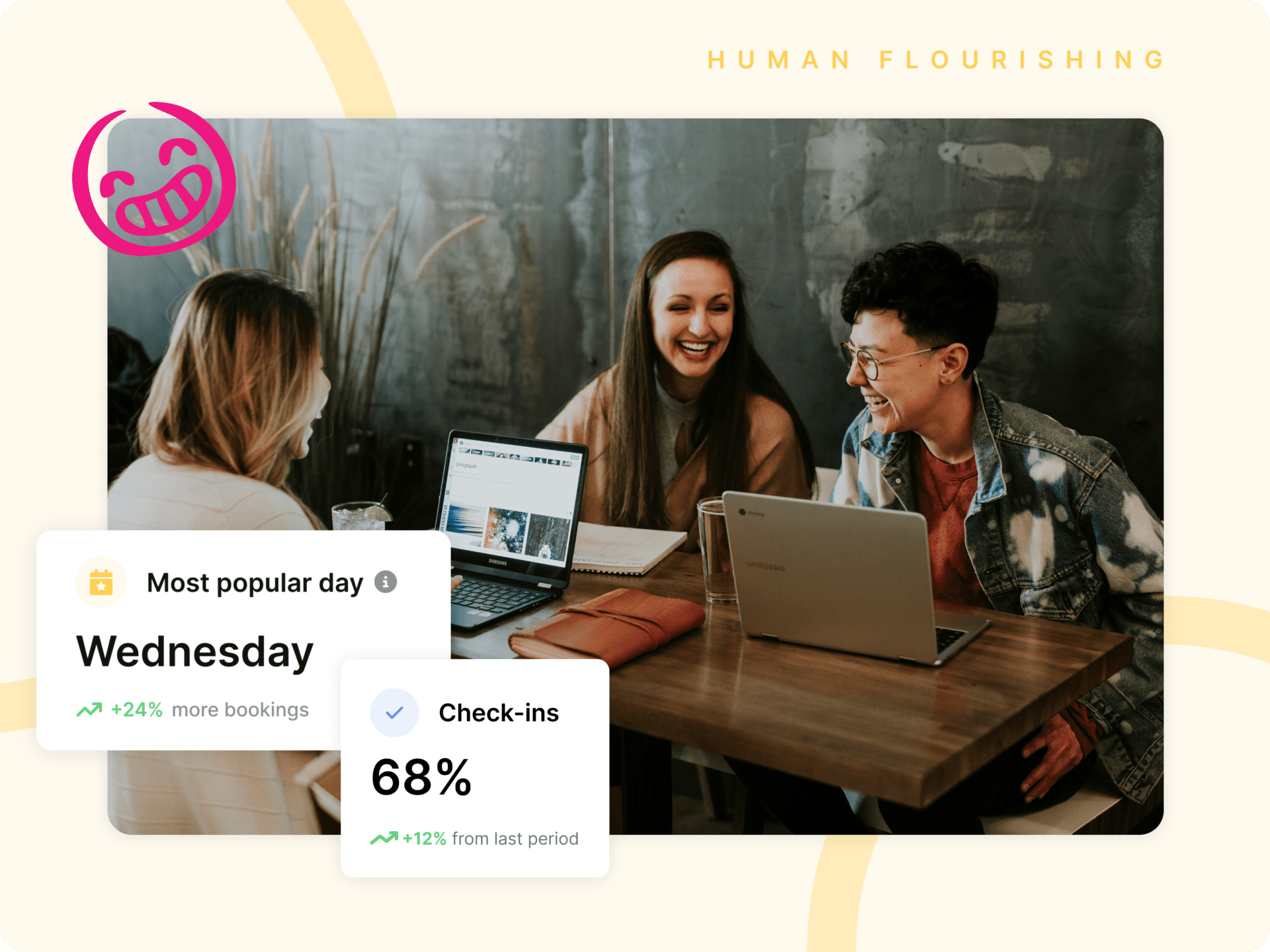In our latest Kadence Connect webinar, we explored the intricacies of building a successful hybrid work strategy. Our guest speakers from Willis Towers Watson (WTW) shared their experiences and insights, providing valuable lessons for organizations navigating the complexities of hybrid work.
The Hybrid Work Landscape
We kicked off the webinar by highlighting the current state of hybrid work. Despite recent headlines about return-to-office mandates, the data shows that hybrid work is here to stay:
- 90% of companies are adopting hybrid models internationally
- 74% of employees would consider leaving if not offered hybrid options
- $25 trillion of employee salaries and $22 trillion of office space are transitioning to hybrid models
Kadence’s own data reveals that employees in the US and UK are consistently coming into the office 2-3 days per week in 2024, up from 1-2 days in 2022. Tuesdays and Wednesdays remain the most popular office days across the globe.
WTW's Hybrid Work Journey
David Music and Nick Mann from Willis Towers Watson shared their organization’s approach to hybrid work. Key aspects of their strategy include:
- No Global Mandate: WTW doesn’t enforce a company-wide policy on office attendance, allowing for flexibility across different regions and teams.
- Manager Empowerment: Team leaders have the autonomy to determine when in-office presence is necessary based on project needs and team dynamics.
- Organic Technology Adoption: WTW introduced Kadence as an optional tool for employees to indicate their office presence, allowing for natural, need-based adoption.
- Focus on Actual Work Patterns: Instead of rigid policies, WTW emphasizes understanding and accommodating how employees actually work.
Leveraging Technology For Hybrid Success
Nick Mann explained how WTW uses Kadence to support their hybrid strategy:
- Simplicity and Integration: Kadence was chosen for its user-friendly interface and integration with Microsoft Teams.
- Optional Use: Employees are not mandated to use the system, allowing for flexibility and privacy when needed.
- Team Coordination: The tool helps teams coordinate their office days, improving collaboration and productivity.
Challenges And Solutions
The WTW team highlighted several challenges they’ve faced and how they’ve addressed them:
- Unproductive Office Visits: By using Kadence, employees can see when their colleagues will be in the office, reducing instances of coming in to find an empty workplace.
- Regional Differences: WTW allows each office to adapt its use of hybrid work tools to suit local needs and cultural norms.
- Social Aspects: The team noted that social interactions remain a key driver for office attendance, with Kadence being used to coordinate after-work social events.
Lessons Learned And Advice
David Music shared valuable insights for organizations developing their hybrid strategies:
- No Easy Answers: Building a regional or global workplace model is complex and requires ongoing adaptation.
- Understand Actual Work Patterns: Focus on how employees are really working, not just what policies dictate.
- Evolutionary Approach: Continuously measure, monitor, and adjust your workplace strategy based on data and feedback.
- Balance Business Needs and Employee Preferences: While the business may push for certain approaches, it’s crucial to consider how people actually work and what makes them most productive.
Looking Ahead: Kadence Feature Updates
Stephen Gowdy from Kadence concluded the webinar by previewing upcoming features designed to enhance hybrid work experiences:
- Workplace Events: A new tool to help drive office attendance by showcasing in-office activities and events.
- Booking Credits: A system to encourage attendance and reduce wasted bookings.
- Automated Desk Check-ins: Upcoming functionality to streamline the check-in process and provide accurate occupancy data.
- Neighborhood Priority Booking: Enhanced flexibility in managing office neighborhoods and space allocation.
Building a successful hybrid work strategy requires a deep understanding of employee needs, flexibility in approach, and the right technological tools to support collaboration and coordination. As organizations continue to navigate this new world of work, the insights shared in this webinar provide valuable guidance for creating workplaces that are both productive and appealing to employees.
For more information on how Kadence can support your hybrid work strategy, contact cx@kadence.co.
Helen heads up Kadence’s People and Partnerships teams. She looks after Kadence’s employees, as well as our customers and partners. She cares deeply about how distributed work can drive better business outcomes and a happier, healthier workforce. Based in Amsterdam, she enjoys exploring the city and the other parts of Europe on her doorstep with her young family.




